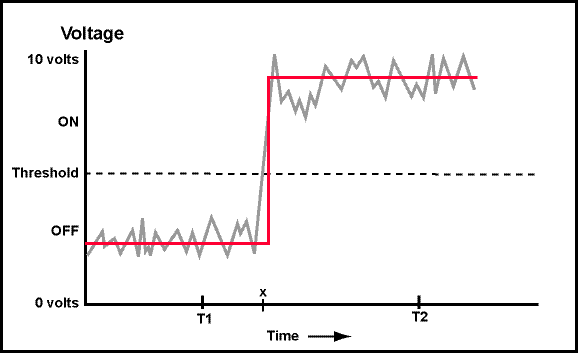Yes—if the signals represented a singer's voice, the noisy signal would sound, er.. well... noisy. After just one copy, information has been lost.

Review the advantages of binary:
Flawless copies can be made: The receiving end of the signal is only interested in the binary values. All it has to do it check if the signal is above or below the threshold. This can be done perfectly (as long as the noise is not too great.) For example, here is the noisy signal with the "on"/"off" values recovered from it:
The original signal has been recovered flawlessly. This process can occur as many times as needed with a perfect copy made each time. This is essential in a computer system, where bit patterns (patterns of one and zero, or on and off) are copied back and forth between the processor and memory millions of times a second. The copies have to be perfect.
Something might be wrong here. Is the signal "on" or "off" at the time "x"? This is not easy to tell. What is worse, a different amount of noise changes the answer. What can be done about this problem? (Hint: must the value of the signal be known at all times?)